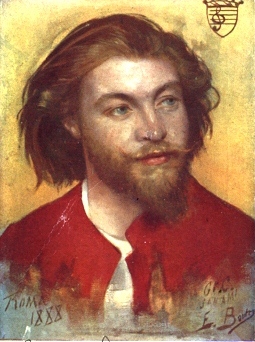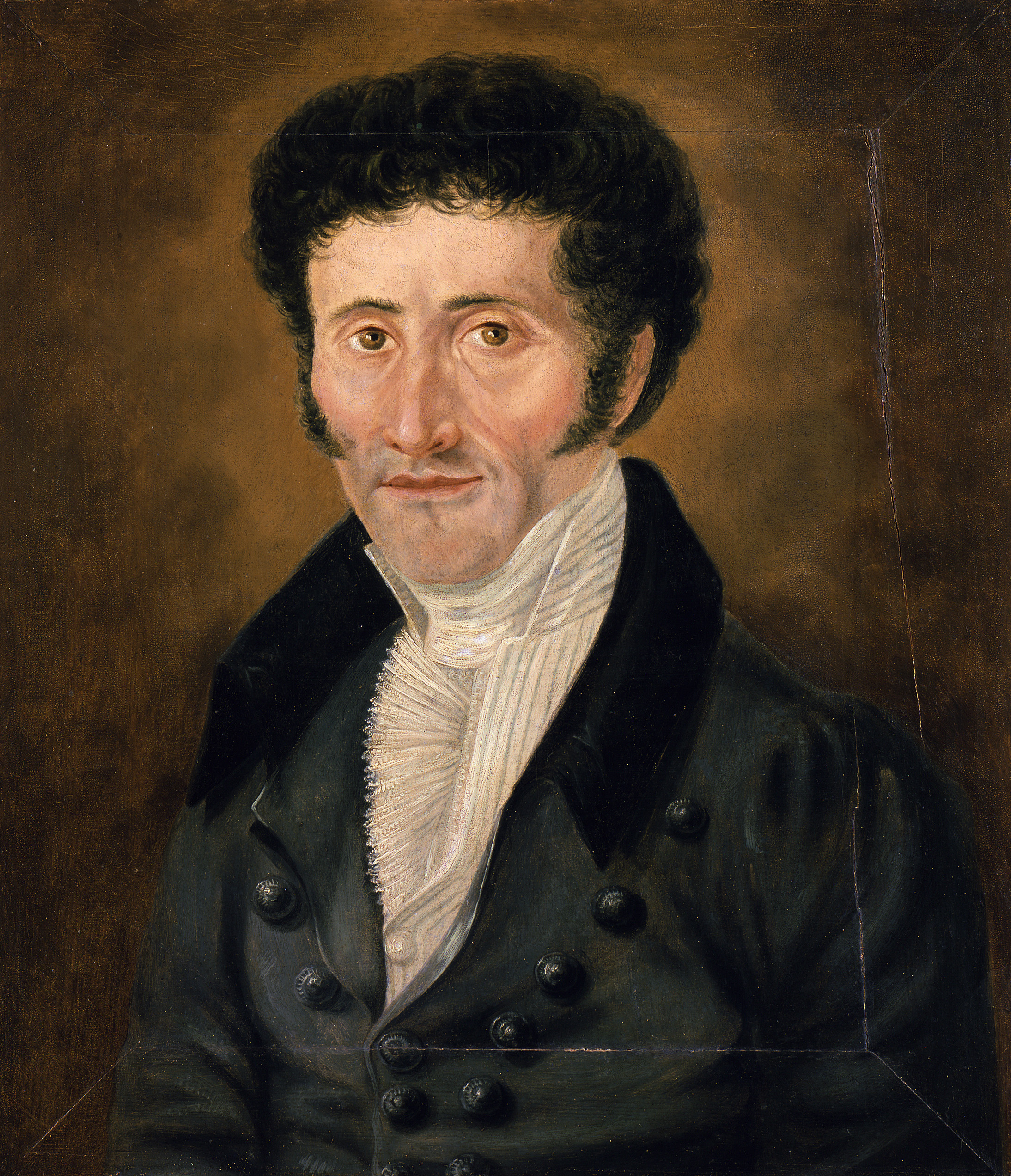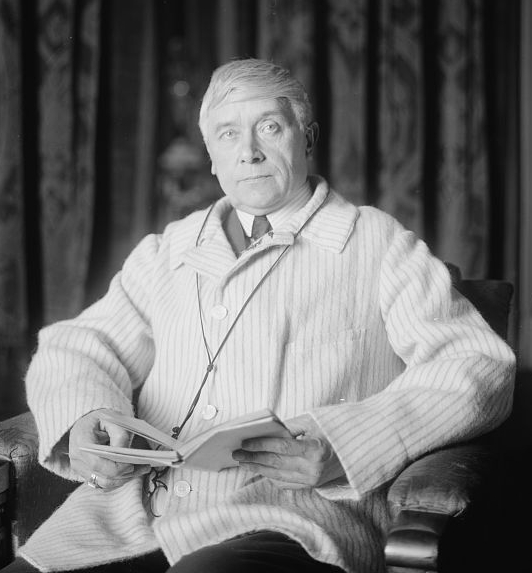|
Ninon Vallin
Eugénie "Ninon" Vallin (8 September 1886 22 November 1961) was a French soprano who achieved considerable popularity in opera, operetta and classical song recitals during an international career that lasted for more than four decades. Career Eugénie Vallin was born at Montalieu-Vercieu, a small town about 30 miles east of Lyon. She studied at the Lyon Conservatoire and later in Paris. At first she had no intention of performing opera, preparing herself for a career on the concert platform. In 1911 she was chosen by Claude Debussy to sing the part of the celestial voice in the first performance of his ''Le martyre de Saint Sébastien''. She continued her association with Debussy, giving the première of his ''Trois poèmes de Stéphane Mallarmé'' in 1914 at the Salle Gaveau in Paris, accompanied by the composer. She also worked extensively with other contemporary composers, including Albert Roussel, Joaquín Nin-Culmell, and Reynaldo Hahn; the latter two accompanied her in ... [...More Info...] [...Related Items...] OR: [Wikipedia] [Google] [Baidu] |
WikiProject Classical Music/Guidelines
A WikiProject, or Wikiproject, is a Wikimedia movement affinity group for contributors with shared goals. WikiProjects are prevalent within the largest wiki, Wikipedia, and exist to varying degrees within sister projects such as Wiktionary, Wikiquote, Wikidata, and Wikisource. They also exist in different languages, and translation of articles is a form of their collaboration. During the COVID-19 pandemic, CBS News noted the role of Wikipedia's WikiProject Medicine in maintaining the accuracy of articles related to the disease. Another WikiProject that has drawn attention is WikiProject Women Scientists, which was profiled by '' Smithsonian'' for its efforts to improve coverage of women scientists which the profile noted had "helped increase the number of female scientists on Wikipedia from around 1,600 to over 5,000". On Wikipedia Some Wikipedia WikiProjects are substantial enough to engage in cooperative activities with outside organizations relevant to the field at issue. For ex ... [...More Info...] [...Related Items...] OR: [Wikipedia] [Google] [Baidu] |
Louise (opera)
''Louise'' is a “musical novel,” or “,” in four acts and five scenes by Gustave Charpentier. It can be considered an opera. The composer himself penned the French libretto with contributions from Saint-Pol-Roux, a symbolist poet and inspiration of the surrealists. It is an atmospheric story of working-class life in Paris, with the city itself invoked along the way: young Louise, a seamstress living with her parents, loves Julien, an artist; she desires freedom, associated in her mind with him and the city. (Charpentier would later write a sequel, the opera ''Julien'', describing the artist's aspirations.) Musically the work is ''verismo'', it marks the beginning of naturalism in French opera. Performance history ''Louise'' was premiered on 2 February 1900 at the Salle Favart by the Opéra-Comique conducted by André Messager in a production by Albert Carré. It was successful, reaching its 100th performance just over a year later; the 500th performance at the Opéra-Comiqu ... [...More Info...] [...Related Items...] OR: [Wikipedia] [Google] [Baidu] |
Charles Lecocq
Alexandre Charles Lecocq (3 June 183224 October 1918) was a French composer, known for his opérettes and opéra comique, opéras comiques. He became the most prominent successor to Jacques Offenbach in this sphere, and enjoyed considerable success in the 1870s and early 1880s, before the changing musical fashions of the late 19th century made his style of composition less popular. His few serious works include the opera ''Plutus (opera), Plutus'' (1886), which was not a success, and the ballet ''Le Cygne (ballet), Le cygne'' (1899). His only piece to survive in the regular modern operatic repertory is his 1872 opéra comique ''La fille de Madame Angot'' (Mme Angot's Daughter). Others of his more than forty stage works receive occasional revivals. After study at the Conservatoire de Paris, Paris Conservatoire, Lecocq shared the first prize with Georges Bizet in an operetta-writing contest organised in 1856 by Offenbach. Lecocq's next successful composition was an opéra-bouffe, ... [...More Info...] [...Related Items...] OR: [Wikipedia] [Google] [Baidu] |
The Tales Of Hoffmann
''The Tales of Hoffmann'' (French: ) is an by Jacques Offenbach. The French libretto was written by Jules Barbier, based on three short stories by E. T. A. Hoffmann, who is the protagonist of the story. It was Offenbach's final work; he died in October 1880, four months before the premiere. Composition history and sources Offenbach saw a play, , written by Barbier and Michel Carré and produced at the Odéon Theatre in Paris in 1851. After returning from America in 1876, Offenbach learned that Barbier had adapted the play, which had now set to music at the Opéra. Salomon handed the project to Offenbach. Work proceeded slowly, interrupted by the composition of profitable lighter works. Offenbach had a premonition, like Antonia, the heroine of Act 2, that he would die prior to its completion. Offenbach continued working on the opera throughout 1880, attending some rehearsals. On 5 October 1880, he died with the manuscript in his hand, just four months before the opening. ... [...More Info...] [...Related Items...] OR: [Wikipedia] [Google] [Baidu] |
Pelléas Et Mélisande (opera)
''Pelléas et Mélisande'' (''Pelléas and Mélisande'') is an opera in five acts with music by Claude Debussy. The French libretto was adapted from Maurice Maeterlinck's symbolist play of the same name. It premiered at the Salle Favart in Paris by the Opéra-Comique on 30 April 1902; Jean Périer was Pelléas and Mary Garden was Mélisande, conducted by André Messager, who was instrumental in getting the Opéra-Comique to stage the work. The only opera Debussy ever completed, it is considered a landmark in 20th-century music. The plot concerns a love triangle. Prince Golaud finds Mélisande, a mysterious young woman, lost in a forest. He marries her and brings her back to the castle of his grandfather, King Arkel of Allemonde. Here Mélisande becomes increasingly attached to Golaud's younger half-brother Pelléas, arousing Golaud's jealousy. Golaud goes to excessive lengths to find out the truth about Pelléas and Mélisande's relationship, even forcing his own child, Yniold ... [...More Info...] [...Related Items...] OR: [Wikipedia] [Google] [Baidu] |
Don Giovanni
''Don Giovanni'' (; K. 527; Vienna (1788) title: , literally ''The Rake Punished, or Don Giovanni'') is an opera in two acts with music by Wolfgang Amadeus Mozart to an Italian libretto by Lorenzo Da Ponte. Its subject is a centuries-old Spanish legend about a libertine as told by playwright Tirso de Molina in his 1630 play '' El burlador de Sevilla y convidado de piedra''. It is a ''dramma giocoso'' blending comedy, melodrama and supernatural elements (although the composer entered it into his catalogue simply as ''opera buffa''). It was premiered by the Prague Italian opera at the National Theater (of Bohemia), now called the Estates Theatre, on 29 October 1787. ''Don Giovanni'' is regarded as one of the greatest operas of all time and has proved a fruitful subject for commentary in its own right; critic Fiona Maddocks has described it as one of Mozart's "trio of masterpieces with librettos by Da Ponte". Composition and premiere The opera was commissioned after the succes ... [...More Info...] [...Related Items...] OR: [Wikipedia] [Google] [Baidu] |
Mignon
''Mignon'' is an 1866 ''opéra comique'' (or opera in its second version) in three acts by Ambroise Thomas. The original French libretto was by Jules Barbier and Michel Carré, based on Goethe's 1795-96 novel '' Wilhelm Meisters Lehrjahre''. The Italian version was translated by Giuseppe Zaffira. The opera is mentioned in James Joyce's " The Dead" (''Dubliners'') and Willa Cather's '' The Professor's House''. Thomas's goddaughter Mignon Nevada was named after the main character. Performance history The first performance was at the Opéra-Comique in Paris on 17 November 1866. The piece proved popular: more than 100 performances took place by the following July, the 1,000th was given there on 13 May 1894, and the 1,500th on 25 May 1919. The opera was also adapted and translated into German for performance in Berlin with Madame Lucca as Mignon. Lucca was well received, but the German critics were unhappy with the opera's alterations to the Goethe original, so Thomas composed a shor ... [...More Info...] [...Related Items...] OR: [Wikipedia] [Google] [Baidu] |
Werther
''Werther'' is an opera (''drame lyrique'') in four acts by Jules Massenet to a French libretto by Édouard Blau, Paul Milliet and Georges Hartmann (who used the pseudonym Henri Grémont). It is loosely based on Goethe's epistolary novel ''The Sorrows of Young Werther'', which was based both on fact and on Goethe's own early life. Earlier examples of operas using the story were made by Kreutzer (1792) and Pucitta (1802). Milnes R. Werther. In: ''The New Grove Dictionary of Opera''. Macmillan, London and New York, 1997. Performance history Massenet started composing ''Werther'' in 1885, completing it in 1887. He submitted it to Léon Carvalho, the director of the Paris Opéra-Comique, that year, but Carvalho declined to accept it on the grounds that the scenario was too serious. With the disruption of the fire at the Opéra-Comique and Massenet's work on other operatic projects (especially ''Esclarmonde''), it was put to one side, until the Vienna Opera, pleased with the succes ... [...More Info...] [...Related Items...] OR: [Wikipedia] [Google] [Baidu] |
Manon
''Manon'' () is an ''opéra comique'' in five acts by Jules Massenet to a French libretto by Henri Meilhac and Philippe Gille, based on the 1731 novel '' L'histoire du chevalier des Grieux et de Manon Lescaut'' by the Abbé Prévost. It was first performed at the Opéra-Comique in Paris on 19 January 1884, with sets designed by Eugène Carpezat (act 1), Auguste Alfred Rubé and Philippe Chaperon (acts 2 and 3), and Jean-Baptiste Lavastre (act 4). Prior to Massenet's work, Halévy (''Manon Lescaut'', ballet, 1830) and Auber (''Manon Lescaut'', opéra comique, 1856) had used the subject for musical stage works. Massenet also wrote a one-act sequel to ''Manon'', ''Le portrait de Manon'' (1894), involving the Chevalier des Grieux as an older man. The composer worked at the score of ''Manon'' at his country home outside Paris and also at a house at The Hague once occupied by Prévost himself. ''Manon'' is Massenet's most popular and enduring opera and, having "quickly conquered th ... [...More Info...] [...Related Items...] OR: [Wikipedia] [Google] [Baidu] |
Thaïs (opera)
''Thaïs'' () is an opera, a ''comédie lyrique'' in three acts and seven tableaux, by Jules Massenet to a French libretto by Louis Gallet, based on the novel ''Thaïs'' by Anatole France. It was first performed at the Opéra Garnier in Paris on 16 March 1894, starring the American soprano Sibyl Sanderson, for whom Massenet had written the title role. The original production was directed by Alexandre Lapissida, with costumes designed by Charles Bianchini and sets by Marcel Jambon (act 1, scene 1; act 3) and Eugène Carpezat (act 1, scene 2; act 2). The opera was later revised by the composer and was premiered at the same opera house on 13 April 1898. The work was first performed in Italy at the Teatro Lirico Internazionale in Milan on 17 October 1903 with Lina Cavalieri in the title role and Francesco Maria Bonini as Athanaël. In 1907, the role served as Mary Garden's American debut in New York in the U.S. premiere performance. ''Thaïs'' takes place in Egypt under the rule of ... [...More Info...] [...Related Items...] OR: [Wikipedia] [Google] [Baidu] |
Palais Garnier
The Palais Garnier (, Garnier Palace), also known as Opéra Garnier (, Garnier Opera), is a 1,979-seatBeauvert 1996, p. 102. opera house at the Place de l'Opéra in the 9th arrondissement of Paris, France. It was built for the Paris Opera from 1861 to 1875 at the behest of Emperor Napoleon III. Initially referred to as ''le nouvel Opéra de Paris'' (the new Paris Opera), it soon became known as the Palais Garnier, "in acknowledgment of its extraordinary opulence" and the architect Charles Garnier's plans and designs, which are representative of the Napoleon III style. It was the primary theatre of the Paris Opera and its associated Paris Opera Ballet until 1989, when a new opera house, the Opéra Bastille, opened at the Place de la Bastille. The company now uses the Palais Garnier mainly for ballet. The theatre has been a ''monument historique'' of France since 1923. The Palais Garnier has been called "probably the most famous opera house in the world, a symbol of Paris like No ... [...More Info...] [...Related Items...] OR: [Wikipedia] [Google] [Baidu] |








